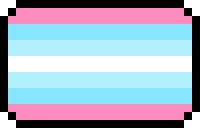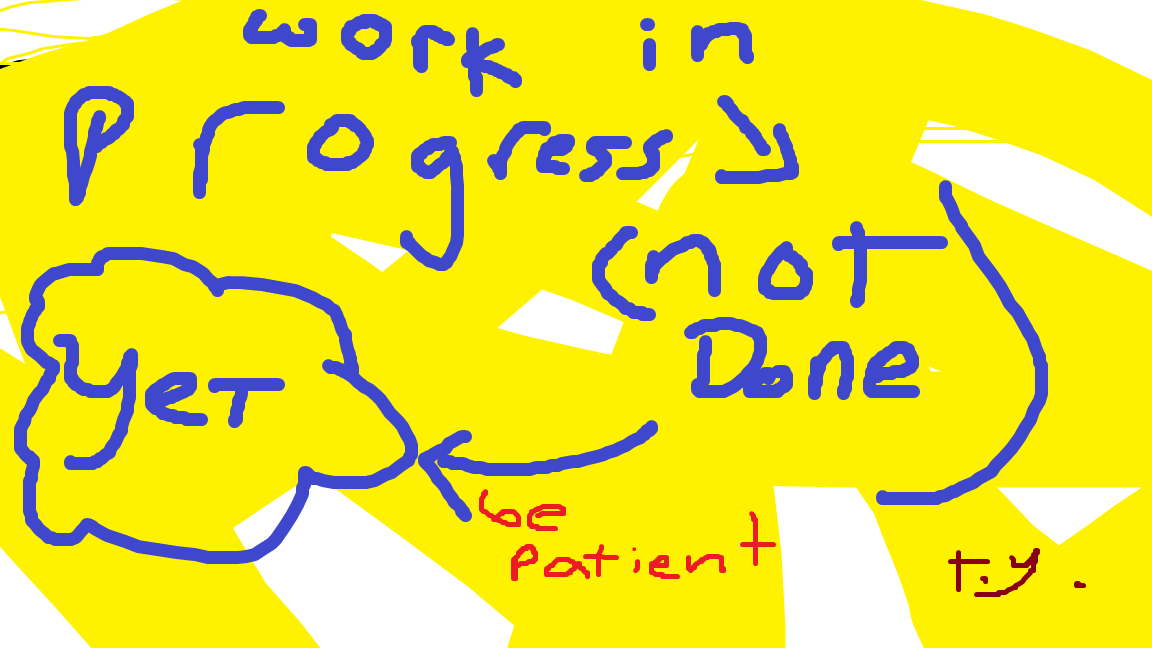
Transmasculine
(also: transmasc, trans-masculine)

Table of Contents
- Introduction
- General Information
- The Transition of a Binary Transgender Man
- Public Figures
- Allums, Kye (October 23, 1989)
- Broadus, Kylar (August 28, 1963)
- Green, Kai M.
- Mosier, Chris (1980)
- Mukasa, Victor (August 16, 1975)
- Page, Elliot (February 21, 1987)
- Strangio, Chase (October 29, 1982)
- Flags
- AMAB Transmasculine/AMAB Trans Man Flag
- Transmasculine Flag
- Trans Man/Trans Boy Flag
- Transmasculine Coffeebean Flag
- External Links

Introduction
Transmasculine is an umbrella term refering to anyone who transitions to a more masculine gender. This term is used to include both binary trans men and certain nonbinary, people such as demiboys, in conversations where their experiences overlap with one another. That being said, not all transgender men will identify with the term transmasculine. Not all transmasculine people are transgender men.
While there are some who are intersex or were AMAB that identify as transmasc, it is a label that is generally associated with those who were AFAB.

General Information
People who identify as transmaculine generally wish to appear more masculine, either through physical bodily means, gender expression, or both. Some transmasculine people will undergo surgeries and hormones, while socially presenting with feminine clothing and/or make up. Others will go full masc. Some will only change clothes/presentation without any physical transition.
Regardless of gender presentation, like any trans people, transmasculine individuals are often subject to not only transphobia but targeted transandrophobia.

The Transition of a Binary Transgender Man
For the purposes of providing examples of what sorts of things a steryotypical transgender man would seek out, I will be describing a binary transition. Please keep in mind that not every transgender man seeks out everything on this list. Everything mentioned has varying levels of how common they are. This is simply for demonstration, and helping anyone unsure of where to start find the relevant pages on this website. Every transgender person has different levels of gender dysphoria and does different things to seek out gender euphoria. I'm no transmed - no one is more or less trans just because they get a surgery that someone else doesn't.
Most transgender men will change their names to more masculine-sounding ones. They will typically use he/him pronouns and overall masculine language. Though it can be difficult to do, depending on the location, many transgender men will undergo legal transition.
Most transgender men who are unable to obtain puberty blockers as children experience gender dysphoria regarding having breasts. A common short-term solution for dealing with these typically consists of binding; either via using a binder or using trans tape. A common permanent solution consists of getting top surgery.
Most transgender men will seek out HRT to deal with most aspects of bodily gender dysphoria. MHT helps a lot when it comes to passing as a man as it deepens the voice, causes facial hair growth, causes bottom growth, and overall masculinizes the body of the person taking it. Some men will try voice training to optimize their voices. Some men will undergo voice masculinization surgery or FMS if they are not happy with the results of TRT - though these last two surgeries are more uncommon.
Many transgender men experience some level of bottom gender dysphoria (aka. dysphoria regarding genitalia). Many transgender men will pack to have the appearance of a bulge (and sometimes stand to pee, depending on the packer used). Some trans men seek out surgeries such as meta and/or phallo to surgically obtain a neophallus. Some transgender men will get scrotoplasty to have balls, a hysterectomy to prevent pregnancy, or a vaginectomy to no longer have a vulva.

Public Figures

Allums, Kye (October 23, 1989)
Kye is a black queerfluid person who uses He/They pronouns and formerly played women's college basketball. He is now a public speaker, artist, transgender advocate, and mentor to LGBT youth. Kye travels around The United States, and produced a project known as "I am Enough" to encourage LGBTQ people to share their experiences.
Click to jump to external resources regarding Kye Allums.

Broadus, Kylar (August 28, 1963)
Founder of the Trans People of Color Coalition. He is an attorney, public speaker, long-time activist, author, and professor.
Click to jump to external resources regarding Kylar Broadus.

Green, Kai M.
Kai is a feminist, abolitionist, poet, writer, scholar, & filmmaker. Kai is from The United States.
Click to jump to external resources regarding Kai M. Green.

Mosier, Chris (1980)
Chris is an American advocate for transgender rights and a competitive triathlete, racewalker, and duathlete.
Click to jump to external resources regarding Chris Mosier.

Mukasa, Victor (August 16, 1975)
On the frontline of the LGBTQ+ rights movement in Uganda.
Click to jump to external resources regarding Victor Mukasa.

Elliot Page (February 21, 1987)
Elliot is a Canadian actor and producer.
Click to jump to external resources regarding Elliot Page.

Strangio, Chase (October 29, 1982)
Chase is a lawyer and trans rights activist from The United States
Click to jump to external resources regarding Chase Strangio.

Flags

AMAB Transmasculine/AMAB Trans Man Flag
This flag is used to represent transmasculine people who were AMAB. Typically used by intersex people.


Transmasculine Flag
This flag is used to represent all transmasculine people.

The pink stripes on the transmasculine flag represent femininity.
The blue stripes on the transmasculine flag represent both transitioning to masculinity and the spectrum of masculinity.

Trans Man/Trans Boy Flag
This flag is used to represent transgender men and transgender boys.


Transmasculine Coffeebean Flag
This flag is used to represent transmasculine people who do not wish to disclose their AGAB.


External Links
The links below are provided for one of the following reasons; entertainment, education, research, or are sources for information above. The ideas contained within the links below do not inherently represent those of The Transgender Dictionary. The links below did not pay to be featured, and are not explicitly associated with The Transgender Dictionary.

Public Figures

Allums, Kye Resources
- Digital Transgender Archive: 09/04/2015: Kye Allums
- OutSports: Dawn Ennis: 10/02/2020: Celebrating LGBTQ sports history: Kye Allums

Broadus, Kylar Resources

Green, Kai M. Resources
- KMarshallGreen
- Oblerin Review: Kerensa Loadholt: 02/19/2016: Off the Cuff: Kai M. Green, Author, Scholar and Activist
- The Feminist Wire - Kai M. Green
- Transponser: KAI M. GREEN

Mosier, Chris Resources
- The Chris Mosier
- Them: Wren Sanders: 01/28/2020: Chris Mosier is the First Openly Trans Man to Compete in Men's Olympic Trials
- Wikipedia - Chris Mosier

Mukasa, Victor Resources
- Been Here: 08/16/2017: Victor Mukasa
- Trans Intersex History: Victor Mukasa is a trans person, human rights defender, consultant, and a founding director of Sexual Minorities Uganda.
- Wikipedia - Victor Mukasa

Page, Elliot Resources
- IMDb: Elliot Page
- NPR: Tonya Mosley: 06/07/2023: In a climate rife with hate, Elliot Page says 'the time felt right' to tell his story
- Wikipedia - Elliot Page

Strangio, Chase Resources

Books/Journals
- Becoming a Visible Man (2nd Edition) by Jamison Green
- Jourian, T. J. 2017. "Transforming College Masculinities: Carving Out Transmasculine Pathways Through the Threshold of Dominance". International Journal of Qualitative Studies in Education, 30:3, 245-265.

Forums

YouTube Resources
- YouTube Playlist: DR Z PHD - Gender Specialist | Transgender Adults: Transition Masculinizing
- YouTube Playlist: The Transition Channel: Female to Male/FtM, Transmasculine/FtW
- YouTube Video: Jammidodger: 12/18/2019: Trans Guy & Girlfriend: How Can We Have Kids? Ft. @Shaaba.
- YouTube Video: uppercaseCHASE1: 02/03/2012: trans* enough project.

Terminology Resources
- Gender - Fandom - Wiki - Demiboy (https://gender.fandom.com/wiki/Demiboy)
- Gender - Fandom - Wiki - Man (https://gender.fandom.com/wiki/Man)
- Gender - Fandom - Wiki - Masculinity (https://gender.fandom.com/wiki/Masculinity)
- Gender - Fandom - Wiki - Trans Man (https://gender.fandom.com/wiki/Trans_Man)
- Gender - Fandom - Wiki - Transmasculine (https://gender.fandom.com/wiki/Transmasculine)
- Health: Claire Gillespie: 10/17/2023: What Does It Mean To Identify as Transmasculine? (https://www.health.com/mind-body/transmasculine)
- Healthline: Sian Ferguson: 01/13/2021: What Does It Mean to Be Transmasculine? (https://www.healthline.com/health/transmasculine)
- LGBTQ History: 10/09/2023: LGBTQ History Month Week 1: Transmasculinity (Invisibility & Illumination) (https://lgbtqhistory.org/lgbtq-history-month-week-1-transmasculinity-invisibility-illumination/)
- LGBTQ Nation: 07/26/2022: What does it mean to be transmasculine? (https://www.lgbtqnation.com/2022/06/what-does-it-mean-to-be-transmasculine/)
- LGBTQIA - Fandom - Wiki - Boi (https://lgbtqia.fandom.com/wiki/Boi)
- LGBTQIA - Fandom - Wiki - Masculine (https://lgbtqia.fandom.com/wiki/Masculine)
- LGBTQIA - Fandom - Wiki - Transmasculine (https://lgbtqia.fandom.com/wiki/Transmasculine)
- MedicalNewsToday: Zia Sherrell: 07/28/2023: Transmasculine: Definition, in practice, and more (https://www.medicalnewstoday.com/articles/transmasculine)
- Merriam Webster Dictionary - Transmasculine (https://www.merriam-webster.com/dictionary/transmasculine)
- Nonbinary Wiki - Transmasculine (https://nonbinary.wiki/wiki/Transmasculine)
- Pride Flag Guide - Transmasculine (https://flag.library.lgbt/flags/transmasculine/)
- Spectrum Id - Female-to-Male (FTM) (https://spectrum-id.com/female-to-male.html)
- Spectrum Id - Transmasculine (https://spectrum-id.com/transmasculine.html)
- Trans Language Primer - Boi (https://translanguageprimer.com/boi/)
- Trans Language Primer - FTM / F2M / Female to Male (https://translanguageprimer.com/ftm/)
- Trans Language Primer - Masculine of Center (MoC) (https://translanguageprimer.com/masculine-of-center/)
- Trans Language Primer - Masculinity (https://translanguageprimer.com/masculinity/)
- Trans Language Primer - Trans Man (https://translanguageprimer.com/trans-man/)
- Trans Language Primer - Transmasculine (https://translanguageprimer.com/transmasculine/)
- Wikipedia - Trans Man (https://en.wikipedia.org/wiki/Trans_man)

Location-Based Resources

Germany-Based Resources
- transmann (https://transmann.de/) - organisation focused on trans men and community support

United States-Based Resources
- BlackTransMen.Org (https://blacktransmen.org/) - charity for T.M.O.C.
- DemBois.Org (https://www.dembois.org/) - charity for T.M.O.C.

Passing/Presentation Resources
- FTM Guide - Men's Shoes in Small Sizes and Lift Shoes (https://www.ftmguide.org/shoes.html)
- ftm passing guide (http://ftmguide.rassaku.net/guide/index.htm) - Binary Trans Man Resource
- The FTM's Complete Illustrated Guide to Looking Like a Hot Dude (https://ftmguide.rassaku.net/guide/index.htm)
- Transaware: Dora Saparow: 03/25/2025: Pass With Confidence: a Guide for Transmasc Presentation (https://transaware.net/pass-with-confidence-transmasc-presentation-guide/)
- Tumblr: 08/15/2012: nihilnovisubsole: AK’s Guide to Suits (https://www.tumblr.com/the-transgenda-agenda/787448221261873152/nihilnovisubsole-nihilnovisubsole-aks-guide) - An introduction to the finer details of menswear, and how to get them right in your… aw, hell, why am I describing it here? Read the intro!
- Wayback Machine: BuzzFeed: 11/22/2013: Antwaun Sargent: Everything You Need To Know About Men's Fashion In One Infographic (https://web.archive.org/web/20131123104853/https://www.buzzfeed.com/antwaunsargent/everything-you-need-to-know-about-mens-fashion-in-one-infogr) - infographic about men's fashion tips

Representation Resources
- Campaign: Marty Davies: 09/13/2023: Transmasculine visibility and the joy of finally being seen (https://www.campaignlive.co.uk/article/transmasculine-visibility-joy-finally-seen/1837038)
- Letterboxd: everythingisgay: Transmasc (https://letterboxd.com/everythingisgay/list/transmasc/) - List of Movies/short films/series about transmasc ppl, trans men/boys, GNC & questioning ppl, masc-leaning nonbinary ppl, crossdressers, drag kings, etc.
- Pink News: Hilary Mitchell: 12/06/2024: Exploring what ‘transmasculine non-binary’ means as Oppenheimer star comes out (https://www.thepinknews.com/2024/12/06/transmasculine-non-binary-meaning/)
- Queer Books For Teens - Trans Boys (https://queerbooksforteens.com/find-books/?fwp_gender=trans-boys) - list of books with trans boy characters
- Time: Trish Bendix: 02/02/2020: How a New Class of Trans Male Actors Are Changing the Face of Television (https://time.com/5686290/transgender-men-representation-television/)
- Trans Guy Supply: 01/18/2023: 7 TV Shows with Trans Masc/Trans Male characters to Watch Right Now (https://transguysupply.com/blogs/news/trans-men-tv)
- Trans Male Resources: Documentaries, Shows, Films, Interviews, and Games. (https://www.transmaleresources.com/)
- Trans Masc Stories (https://www.transmascstories.com/)
- Work in Progress (https://www.melodymelamed.com/work-in-progress) - portraits of transmasculine people

Additional Resources
- Book: The Will to Change: 2004: Bell Hooks (https://dn721601.ca.archive.org/0/items/the-will-to-change-men-masculinity-and-love-by-bell-hooks-z-lib.org.epub/The%20Will%20to%20Change%20Men%2C%20Masculinity%2C%20and%20Love%20by%20bell%20hooks%20%28z-lib.org%29.epub.pdf)
- ftm guide (https://ftm-guide.com/)
- Hudson's FTM Resource Guide (https://www.ftmguide.org/)
- Huffpost: Robi Ludwig, Psy.D., Contributor: 02/18/2015: What Does It Mean to Be Transgender? (https://www.huffpost.com/entry/what-does-it-mean-to-be-t_b_6704446) - Ryan Sallans, who is a transgender man and author of the book, is an activist and international speaker on this topic. Ryan has agreed to answer my questions regarding some of the most-talked-about questions about what it means to be transgender.
- itch.io - 404luxio - tiny pixel pride flags (https://404luxio.itch.io/tiny-pixel-pride-flags)
- MermaidsUK - To Be A Trans Man: A love letter to trans masculinity (https://mermaidsuk.org.uk/news/to-be-a-trans-man-a-love-letter-to-trans-masculinity/)
- My Transition FTM - Suitcase Handle (https://mytransitionftm.wordpress.com/tag/suitcase-handle/)
- Taylor & Francis: Understanding the role of gender congruence and affirming care in trans men’s body image and quality of life (https://www.tandfonline.com/doi/full/10.1080/26895269.2025.2483223) - Cahill, L., Staras, C. O., Perera, A. T. M., Jones, B. A., & McDermott, D. T. (2025). Understanding the role of gender congruence and affirming care in trans men’s body image and quality of life. International Journal of Transgender Health, 1–16. https://doi.org/10.1080/26895269.2025.2483223
Trans men face unique challenges related to gender congruence, body satisfaction, and quality of life (QoL). While research highlights the importance of these factors for transgender and gender-diverse (TGD) individuals, little is known about how they intersect to influence specific QoL domains (e.g. physiological, psychological, social, and environmental) for trans men. Understanding these relationships is critical to developing interventions that support their well-being.
Findings underscore the importance of gender congruence in shaping body satisfaction and QoL for trans men, highlighting its mediating role in the benefits of gender-affirming care. Interventions should prioritize fostering gender congruence and addressing body image concerns to enhance trans men’s well-being across multiple life domains. - The Transitional Male (https://www.thetransitionalmale.com/) - Last Updated July 23, 2014
- Transgender Map - Gender transition: men / transmasculine (https://www.transgendermap.com/welcome/for-trans-people/transmasculine/)
- Transgender Teen Survival Guide - Transmasculine Resources (https://transgenderteensurvivalguide.com/transmasculineresources)
- Transguys (https://transguys.com/)
- TransMascArchive (https://transmascarchive.wixsite.com/home)
- Trans Social: Beaux Ramos: TRANS MASC GUIDE: Some helpful tips for early transitioning (pdf) (https://transsocial.org/wp-content/uploads/2023/08/Trans-Masc-Guide.pdf)


